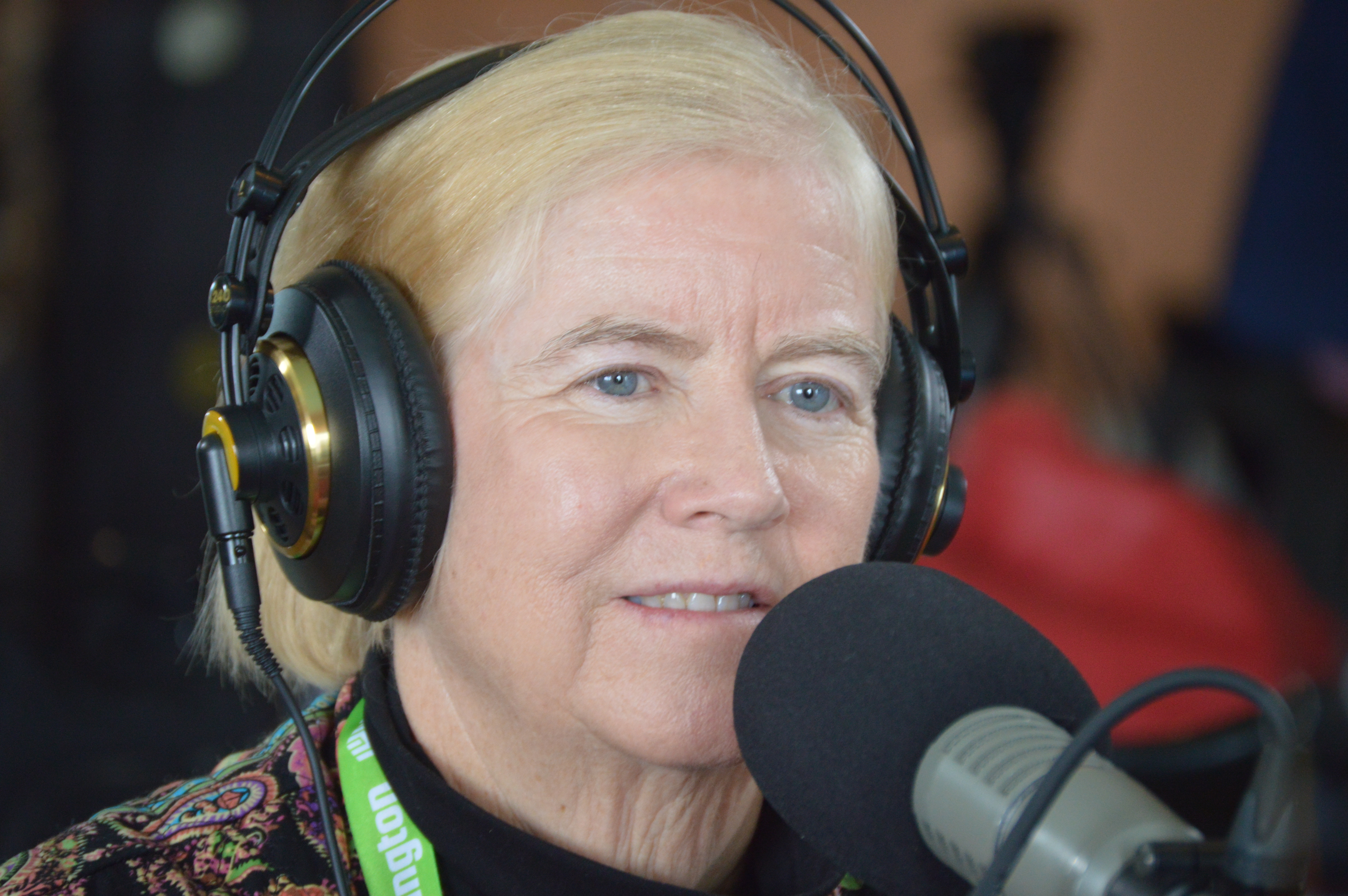Heavy Rain Spills Over Into Sewer Spat Between EGLE, Macomb County
Public Works Commissioner Candice Miller says expanding retention basin would protect Lake St. Clair. The state has questions.

State and local officials are at odds over how to handle sewage overflows caused by heavy rain.
On Jan. 11, 2020, more than two inches of rain fell across southeast Michigan. That much precipitation can overwhelm sewer systems.
In Eastpointe and St. Clair Shores, for example, the sewers are designed to carry both sewage and storm water, which flows into a storage basin near Lake St. Clair. The Chapaton Retention Basin can hold up to 30 million gallons of combined sewer overflow (CSO). When it gets too full, basin operators treat the excess water with a bleach solution, then release it into the lake.
During the recent rain storm, more than 60 million gallons of CSO ended up in the lake. Macomb County Public Works Commissioner Candice Miller says that’s unacceptable.
“Wouldn’t it be better not to be discharging it out into the lake? It’s still sewer.” — Candice Miller, Macomb Co. Public Works Commissioner.
Miller says expanding the 51-year-old Chapaton Retention Basin would reduce the release of CSO by 70 to 80 percent. The $30 million dollar project would double the basin’s capacity. Had it been expanded already, Miller says no CSO would have ended up in the lake this time.
All Macomb County needs to start the project is a permit from the Michigan Department of Environment, Great Lakes and Energy (EGLE). The public works office requested the permit in 2019, but EGLE has not issued one yet.
Miller is frustrated.
“We have run into a lot of resistance from EGLE,” Miller says. “They’re saying ‘why do you want to improve on what we are already permitting?’ That is not the correct posture for them at all.”
Scott Dean, an EGLE spokesperson, says the state is committed to reducing CSO discharge and to working with Miller.
“We look forward to meeting with Macomb County officials,” Dean says.
But before it can get the necessary permits, the county needs to show the state why it needs to expand the Chapaton basin.
“EGLE believes the best opportunities for environmental benefit could lie upstream of the facility,” Dean says.
“The county has already demonstrated that the Chapaton facility is providing adequate combined sewer treatment to protect water quality under its existing permit.” — Scott Dean, Michigan EGLE spokesperson.
Dean says the proposed expansion would take up 1,500 feet of state waters. He adds that EGLE needs to understand why the project includes plans for a new public boardwalk (see artist’s rendering above).
“EGLE has never before permitted such a large open sewage lagoon associated with a park,” Dean says.
Miller says Oakland and Wayne counties release far more CSO and raw sewage than Macomb does. She also sees the Chapaton project as an educational opportunity for students and residents.
“We could talk to them about what they’re actually looking at, how this particular system works, why it’s important,” Miller says. “Everything we’re doing is with an eye toward quality of life and improving water quality.”
Click on the player above to hear Candice Miller’s conversation with WDET’s Pat Batcheller, and read a transcript, edited for clarity, below.
Pat Batcheller, 101.9 FM, WDET: How does the retention basin work?
Candice Miller, Macomb Co. Public Works Commissioner: You have older communities that were built with combined systems. There’s sanitary sewer, then there’s storm water. It all gets combined. In a heavy rainfall, that’s what ends up being discharged after a bit of permitted treating with a heavy bleach/chlorine. You treat it, then you discharge it.
So it is treated before its discharged into the lake?
In our case, yes. In Wayne County, that’s not always the case. There’s literally billions of gallons of raw sewage that’s discharged after heavy rain. What we are doing currently is permitted by the state. They say that what we’re doing is good enough. Not every community in Macomb County discharges. Newer communities have better facilities, they don’t have the combined sewers. The Chapaton system is a holdover from the older communities. It’s pretty much true in all industrial areas, not just Detroit. It’s not cheap to separate your drain systems or to increase retention so you can treat it better before it’s discharged. That’s what we’re trying to do at Chapaton.

Why haven’t you been able to expand Chapaton?
We have a two-phase plan that’s being designed to double the amount of retention that we have. Right now, we can treat and retain 30 million gallons. We’re think we can double that. We’re trying to get the finances together. It’s a local initiative paid for by local communities. We have run into a lot of resistance from EGLE. They’re basically saying “why do you want to improve upon what we’re already permitting?” In my opinion, that’s not the correct posture for them at all.
How would expanding Chapaton help reduce CSO discharge into Lake St. Clair?
We’re going to install some gates in our existing interceptor, which will allow us to hold the flow back during wet weather events, then after the weather passes, we’ll send it down to a proper facility for treatment. The other phase of this, we have a spit of land that we’re going to excavate and turn into a wetland. In 2019, we discharged CSO seven times. If we had already done this, we wouldn’t have needed to discharge at all.
Because they’ve been treated, do CSO pose any kind of health threat when discharged into the lake?
Well, EGLE says no. They say it’s fine. I personally do not believe that. I think that’s the wrong posture. Why do you want to have anything in the lake, whether it’s treated or not? Wouldn’t it be better not to be discharging it into the lake? It’s still sewer. Let’s say you’re in your pool. You have a lot of chlorine in your pool. You don’t want stuff in your pool that shouldn’t be in there, right? I think what’s happened over the years is that there’s been a lot of improvements in sewer overflows, but we’re nowhere near complete with the job. We can’t pass it on generationally. I don’t think people often realize what’s going on. I’m trying to raise public awareness so that people will say we don’t have to live this way. We have to have the political will. We have to put some resources toward this, but we need to be fixing these problems so we don’t continue to have CSO going into the lake. I sit on the Great Lakes Commission, which includes eight states and two Canadian provinces. And some don’t allow any CSO.
EGLE says it’s committed to working with you and shares your goal to reduce CSO, but asks if you could do that by installing more green infrastructure such as wetlands upstream instead of expanding Chapaton?
We plan to do that. I look at this as a layered approach. We are doing some green infrastructure things. For example, we just finished a $2 million project in Sterling Heights that’s all green. We planted 1,000 trees and other natural measures to take out sedimentation, nitrogen and phosphorus. I’m totally committed to green infrastructure, but that’s not going to be enough at Chapaton.
The artist’s rendering your office released shows what appears to be walking piers and a marina adjacent to the property. Are those things already there?
The marina is adjacent, but is not ours. The owners support our project because they don’t want CSO going into their marina every time it rains. We have tremendous public support. Every county commissioner, the city councils, every state rep and state senator and our congressional delegation are all on board with our projects. As for the artist’s rendering, we do want to optimize that spit of land so it could be used for fishing and a boardwalk. Part of this is about how we educate the next generation. We would like to do some curriculum there so you could have environmental classes coming out. We could talk to them about what they’re looking at, how this particular system works, why it’s important to properly treat this, and why we need to look to making sure we don’t have any more CSO, and how important is to our Great Lakes. Everything we’re doing is with an eye toward quality of life and improving water quality.
Would it be safe to have a boardwalk that close to a large open sewage lagoon?
Oh, yes. Most of the time, the basin’s not going to be full anyway, because it would de-water within a day or so. We’re working with landscape engineers for the kinds of life we that would survive when there is water in it. We have a canal that goes out there already that people could access. Because of the way we treat it, there would be no risk to public health.
How much would it cost, and who would pay?
The cost will be about $30 million dollars. I’ve gotten contributions for about a third of that already. The state has added $3 million. We’re working with them. We’ve gotten money from the county and local communities. The rest will have to be paid by ratepayers through bond sales. We think we’ve worked the numbers out so it won’t increase rates. Financially, we’ve really looked at this.
